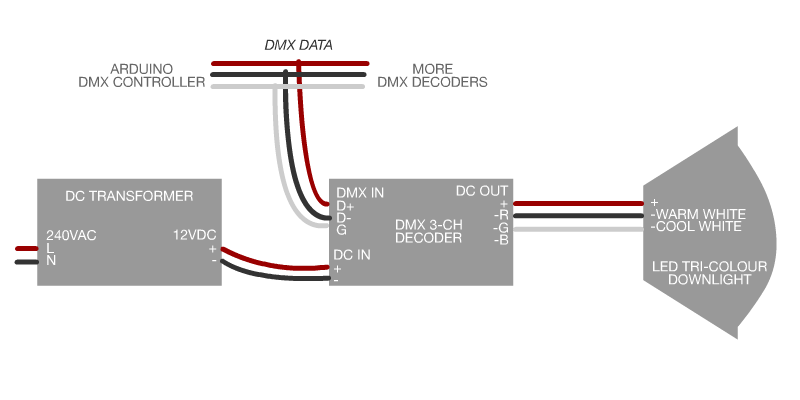Gday All,
Ive spent the last few weeks binge watching Superhouse and Scouring the web working on plans for my home automation dream 
Slowly been buying bits and pieces, teaching myself Arduino and refreshing my Linux (have a BSc in computer science so that part isnt too bad) but still keep coming back to how do I do dimmable lights.
I’m about to renovate my home theater (over the next few weeks), so will be adding some LED Downlights and probably LED strip lights etc around the place as well as replacing the light switches with the Superhouse ones  and adding a 2nd Switchboard next to my networking equipment, luckily I ran UTP everywhere when i was building the house 15+ years ago…
and adding a 2nd Switchboard next to my networking equipment, luckily I ran UTP everywhere when i was building the house 15+ years ago…
So I guess my question is what do people think of using a 12Volt DIN mounted Power supply to run one of these http://www.inmojo.com/store/krida-electronics/item/8-channel-ac-light-dimmer-module-arduino/ on 12V and then running wires up to 12V LED Dimmable MR16 bulbs in the downlight fittings?
Am planning on having probably 6 downlights in the room split as 1 set of 4 and 1 set of 2 (to light my partners home office area at the back of the theater). but hoping to be able to control each downlight seperatly as well if needed. As well as the downlights will add some strip lighting around the place as well as maybe adding some linear actuators on the windows to open and close them to let some fresh air in etc…
Am going to use IR to control the A/V equipment and the Theater screen as It will be going in front of the Windows (only way things will fit) but I have roller shutters on the outside of the windows and the screen pretty much covers the windows completely. So also need to find some way to motorize my old manual winding roller shutters, but I dont think that will be too much of a problem.
I am thinking that since all the electronics past the 12V power supply is ELV than I should be good on Electrical compliance and able to do that part myself although I might talk to a sparky about helping me run some cables up to the lights as I’m not the most agile of 47 almost 48 year olds 
I keep thinking I should go back to Uni and get an Electrical Engineering Degree as well or Robotics is another option  but even then I still wouldnt be able to do my own electrical work unless I do an electrical apprenticeship it seems, I kinda like the US way they handle home electrical work, but we aussies do some strange things lol
but even then I still wouldnt be able to do my own electrical work unless I do an electrical apprenticeship it seems, I kinda like the US way they handle home electrical work, but we aussies do some strange things lol
I’m guessing since usually the power supplies for 12V lights are located right next to the light, am I going to have issues with the cables being so long? approx 8-10m and does anyone have any suggestions on type of cable? just run 2 wires to each or UTP just in case to future proof 
Anyways thats my idea, not sure on how feasable it is, am working on getting some of the bits and pieces together at the moment to test things out. I guess my major concern is legality and what is feasible and if anyone has a better idea 
My plan is to install a mix of Relays and Triacs, but if I can get away with 12V or 24V lighting I think thats the way to go then I can slowly replace the old style lighting over time in the rest of the house, main thing for now is Automated lighting control, would love to be able to open and close the windows automatically as I only have Evaporative AC here in Adelaide, am looking at adding some reverse cycle split systems in a couple of rooms for when its really HOT, but most of the time the Evaporative keeps things cool and breezy 
I also have a couple of Gas heaters, but they have manual knob like thermostats so not sure how I could automate those.
Anyways hope that ramble makes some sense to people, let me know what you think of the idea, and wether I am completely off the reservation 



